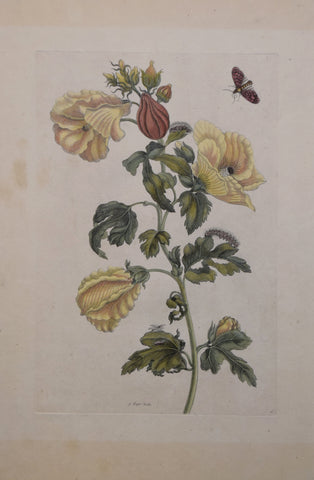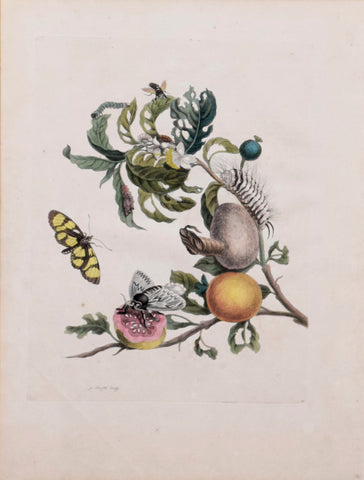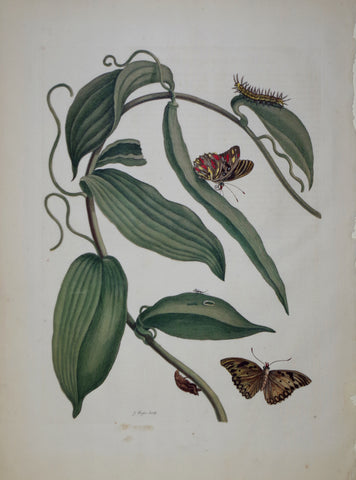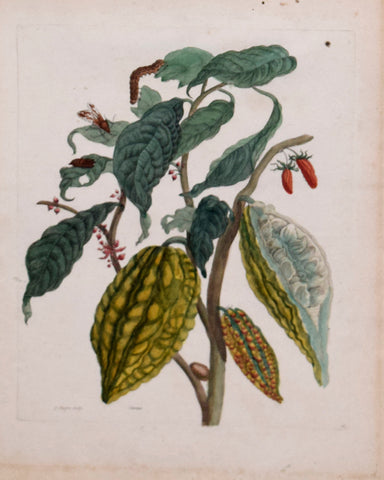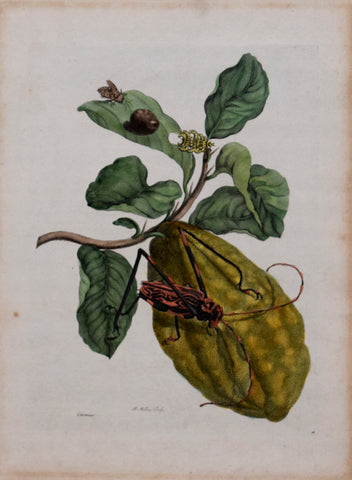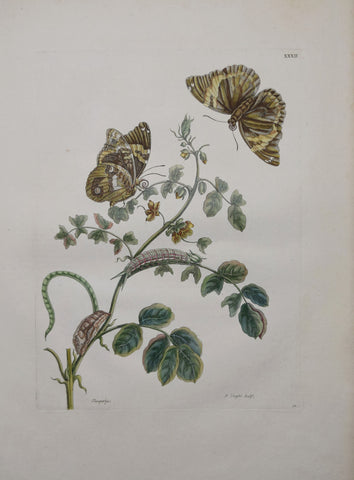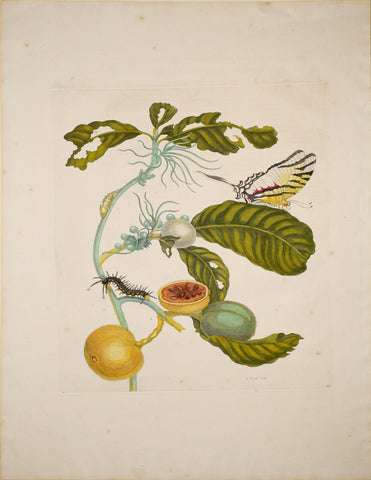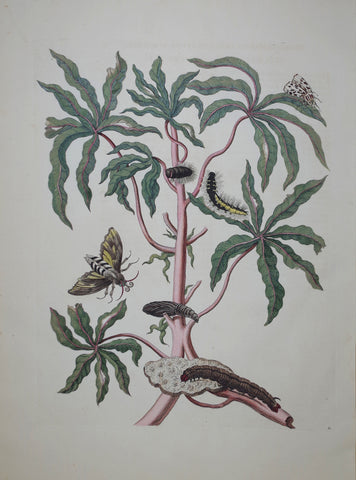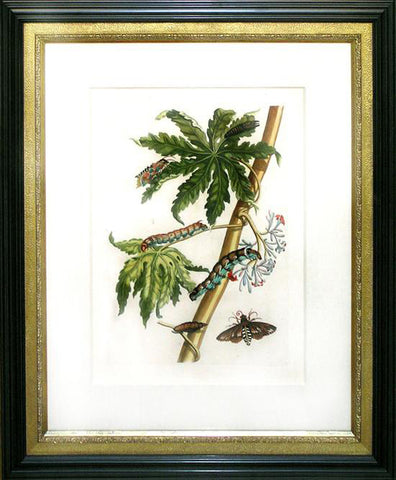Search By Artist
Maria Sibylla Merian (1647-1717)
Maria Sybilla Merian (1647-1717) was born into a century of unparalleled change. The Thirty Years’ War, that had ravaged Europe since 1618, ended the year after her birth. The resulting Treaty of Westphalia brought about new religious freedoms. This new era of Enlightenment allowed science to blossom. It was this atmosphere that such figures such as Sir Isaac Newton (1643-1727) was able to define the laws of gravity, and George Buffon (1707-1788) advanced the evolution debate by exploring the theory that all living creatures are derived from one species that has changed over time. The great English poet, Alexander Pope (1688-1744), summed up this spirit of discovery perfectly, writing: “Know then thyself; presume not God to scan. The proper study of mankind is man.”With the new age of discovery, science more than ever before, came to depend upon the artist’s skill in illustration.
Maria Sibylla was born in Frankfurt, Germany on April 2, 1647 to the famous publisher, Matthias Merian, and his second wife, Johanna Sibylla Heim. At the age of three her father died, and one year later her mother married the Dutch painter, Jacob Marrell, also a resident of Frankfurt. He provided her with an early artistic training and also introduced her to natural history illustration. Merian not only concentrated upon the beauty of flowers, the majority of her compositions included insects, an unusual consideration for a woman of the 17th century. However, in her publication, Metamorphosis Insectorum Surinamensium, Maria Sibylla Merian was to confess:“From my youth onward I have been concerned with the study of insects. I began with silkworms in my native city, Frankfurt am Main; then I observed the far more beautiful butterflies and moths that developed from other kinds of caterpillars.” Her ability to study certain caterpillars was aided by Marrell’s brother, a silk trader in Frankfurt.
While her fascination was most certainly real, for she was to travel with her daughter Dorothea to Surinam in 1699 specifically to record the insect life of the Dutch colony, it also provided her with a modicum of financial security. The excitement of discovery extended beyond the confines of scientists to that of the collector, and his cabinet of curiosities. Eager to acquire the latest discoveries, these wealthy collectors employed artists to record their collections. Maria was acquainted with the Amsterdam collectors Nicholas and Jonas Witsen, and Livinus Vincent, the first of whom ensured that she received financial assistance from the city for her perilous journey to Surinam.

